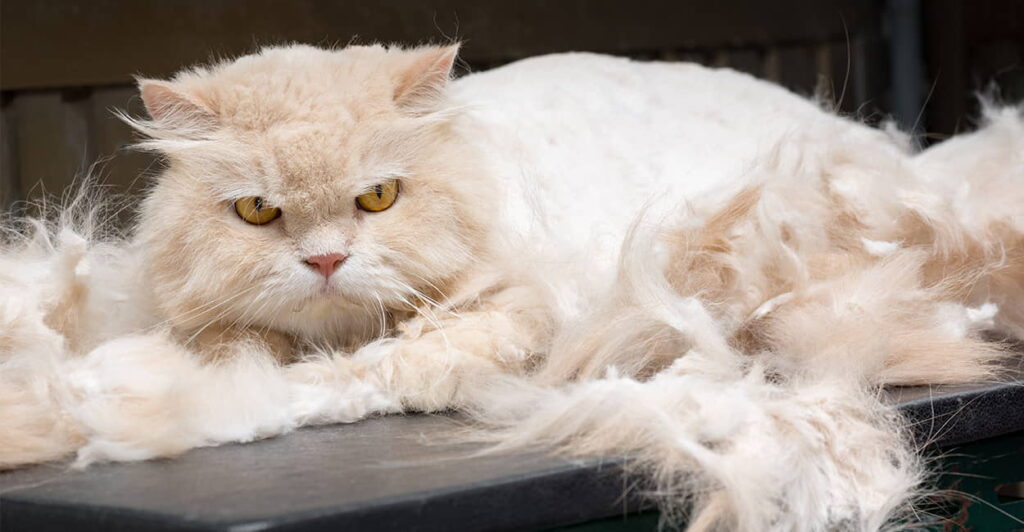Article provided by Catster

Densely-furred pets have combination coats made up of longer, coarser top fur and softer, finer inner fur that creates a warm air-trapping blanket for the skin in cold weather. It is the pet’s undercoat that tends to tangle, mat and clump as it can be shed if it is not groomed carefully. In extreme cases, the unfortunate result is a weakened and dulled coat, or a thick thatch that must be simply shaved.
A de-shedding tool for pet grooming reaches past the longer outside hairs and removes the inner coat hairs before they mat and thatch. It protects the coat for future growth and keeps the skin surface clean and properly aired and stimulated. The de-shedding tool does not cut hair, but it allows hair that has already detached from the hair follicle to be discarded. Most dogs do not find the process uncomfortable and some even enjoy the comfort of a coat not covered in mats.
Note that a de-shedding tool isn’t analogous to the thinning scissors that stylists use to reduce bulk in human hair. Thinning scissors cut; the de-shedder releases loose tresses.
Typical dogs that are good candidates for de-shedding include Poodles, Shih Tzus, Maltese, Bichons, Malamutes and Irish Water Spaniels.

Similarly, long-haired cats benefit from the de-shedding tool. Because de-shedding helps prevent hairballs, de-shedding is a health enhancement for all cats, especially Himalayan and Persian types.
While the de-shedding tool prevents mats and tangles, it does not easily or comfortably remove them, so it should be used regularly, about once a week, in order to maintain a well-groomed coat. The tool can be used all year ’round, but users will see that the bulk of fur removal happens in the spring and summer. Therefore, users do not need to worry about the de-shedding tool thinning out a thick coat. It will not cut hair that is attached to the follicle.
Dog de-shedding tools and cat de-shedding tools are similar, although cat tools are usually smaller. The “Furminator” is one of the highest recommended and marketed de-shedding tools with models designed for pets of all sizes and hair types.
To use a de-shedding tool, separate the coat into layers as you would for a comb-out and run the tool over the layers like a comb. Remove the fur that adheres to the tines regularly to keep the tool easy-to-use and effective.
Wondering about The Special Grooming Needs of a Senior Cat? Check it out on our latest post!


0 Comments